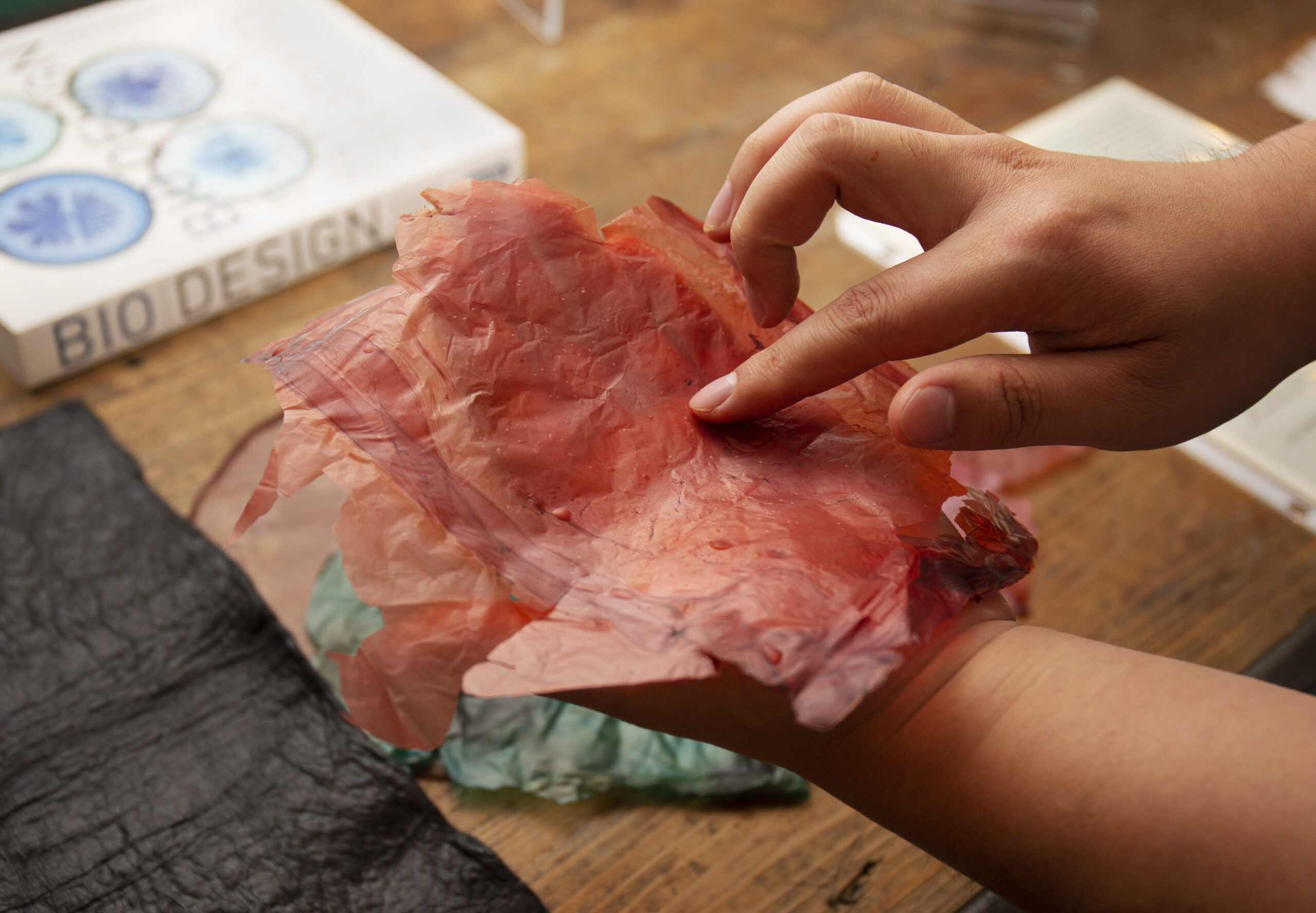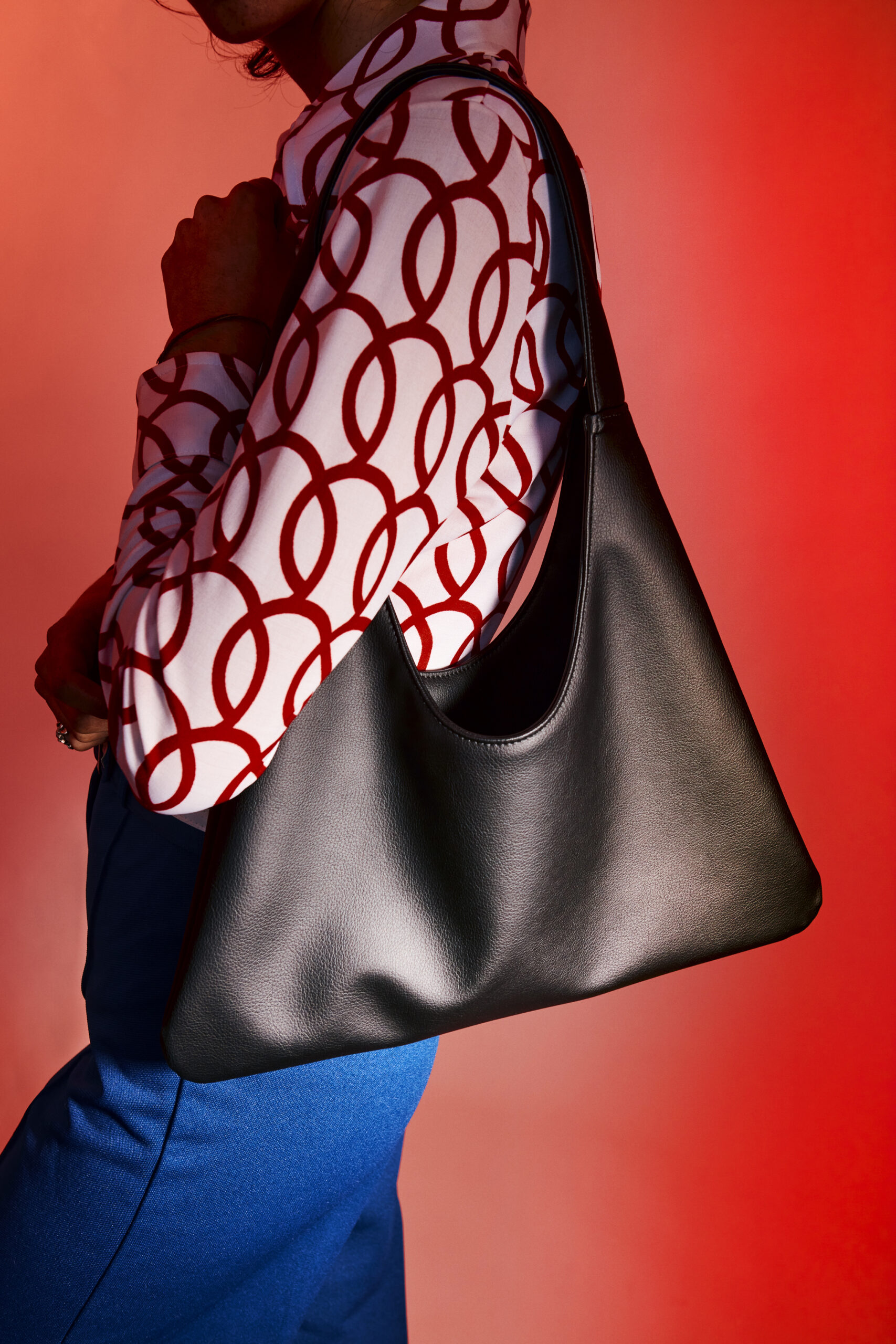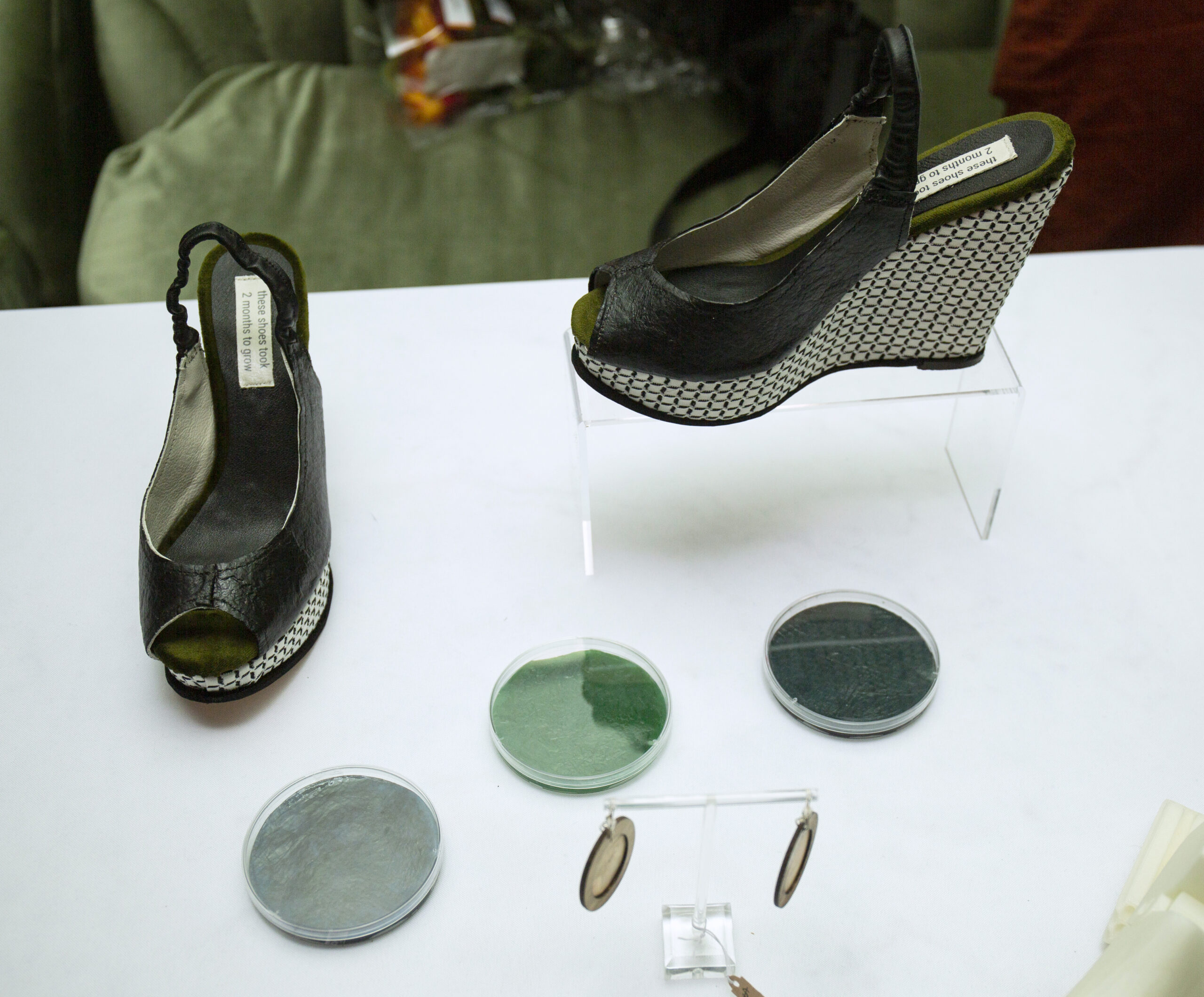
Mealworm Exoskeletons
Charlotte Böhning, MID ’23, and Mary Lempres, BFA Fine Arts (Painting) ’18; MID ’23
A shared background in regenerative farming inspired Charlotte Böhning and Mary Lempres to seek waste-free solutions using nature’s processes as a guide. This year, they collaborated as finalists in the Lexus Design Award competition to develop a concept called Chitofoam, a biodegradable alternative to polystyrene generated from the exoskeletons of mealworms, which are able to digest polystyrene. (The circular system expanded into a larger project the duo branded Chitofarm.)

Kelp
Aaron Nesser, MID ’17
Fast growing, carbon-sequestering kelp provides the basis for renewable yarn developed by Keel Labs (formerly known as AlgiKnit), cofounded in 2016 by Pratt alumnus Aaron Nesser, with Tessa Callaghan and Aleks Gosiewski. The company has spent the past several years iterating on this alternative to synthetic fibers, producing a sleek yarn balancing durability and degradability that has attracted global fashion brands. The brand is in conversation with several top labels to begin using its signature seaweed-based yarn, Kelsun, in sustainable consumer products, and recently opened a new manufacturing facility in North Carolina’s Research Triangle in June. @keel.labs

Bacterial Nanocellulose
Madison Wilds Burger, BFA Photography ’20
As a student, Madison Wilds Burger researched biomaterial companies, leather industry practices, and fashion-industry pollution. Spurred to investigate sustainable alternatives produced without the harmful chemicals used in leather tanning that have both an environmental and a human toll, she began experimenting with bacterial nanocellulose, a biopolymer derived from bacteria and yeast. The renewable leather can grow quickly and achieve a range of thicknesses—including delicately paper thin, which was Burger’s spec for a recent collaboration with a kombucha company, in which she created biodegradable tissue for their gift boxes. madisonwildsburger.com

Nopales
Mónica Santos Gil, BID ’15
During her time in the fashion industry, Mónica Santos Gil became familiar with leather alternatives like PU (polyurethane) and PVC (polyvinyl chloride) and the impact of their lifecycle. When she set out to start her own handbag brand, Santos by Mónica, Santos wanted to work with materials with a more humane footprint. She considered a range of plant-based leathers, ultimately arriving at a biomaterial made from nopales, Mexican cacti that require only rainwater to grow and one-fifth the amount of water used to create traditional animal leather, achieving a supple texture and surface that lets the natural pigments used in her distinctive bags shine. santosbymonica.com

Biochar
Garrett Benisch, MID ’19, and Elizabeth Bridges, MFA Interior Design ’18
With technology company Bioforcetech, Elizabeth Bridges and Garrett Benisch are producing OurCarbon, a carbon-sequestering material derived from organic matter—for example, biosolids from wastewater. Each ton of material produced prevents 10 tons of CO2 from entering the atmosphere, they report. Working with collaborators from across industries, Bridges and Benisch have explored a variety of applications for OurCarbon, from glass and concrete to pigment and screenprinting ink. madewithourcarbon.com

Hemp
Anastasiya Konopitskaya, BArch ’11
Since founding their company Coexist Build, Anastasiya Konopitskaya and her partner, Drew Oberholtzer, have been exploring and producing hemp-based materials for building construction, including precast blocks, as a form of insulation. Last year, they created a wildly popular kit for a tiny house made with hempcrete, an alternative to batt insulation, that also substitutes other conventional materials in a typical wall assembly. (The kit was recently longlisted for the 2022 Dezeen Awards in the sustainable building category.) The material is notable for its CO2 absorption, both during the life of the hemp plants that compose it and in the curing process. Konopitskaya and Oberholtzer are currently conducting grant-funded research around hemp’s life cycle and impact on indoor air quality in Pennsylvania, where Coexist Build is based. coexist.build
Read more stories from “Start Here” in the Fall 2022 issue.
